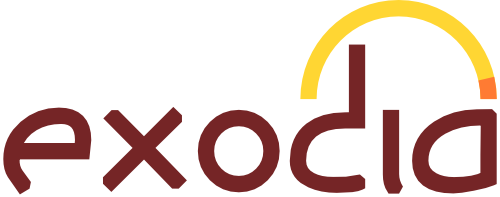The Dilemma of Technical Complexity
Your developers have built an ingenious, AI-powered feature. You understand every detail. Naturally, you want to introduce this feature to your customers. But how do you explain it to a customer who has no idea about your technology but wants to solve a pressing problem?
Choosing the right words is difficult and often leads to misunderstandings. That’s why we’ve prepared this guide for you. With our instructions, you will learn to turn even the most complex feature into a compelling benefit-driven story that customers understand and that encourages them to buy.
To help you get there faster, let’s look at a simple 3-step framework:
- Step 1: Deconstruction – What is the true core of the feature?
- Step 2: Translation – Building the bridge to a concrete customer benefit.
- Step 3: Storytelling – Packaging the benefit into an understandable story.
Step 1: Deconstruction – What Is the True Core of the Feature?
Often, the attempt is made to explain a feature in all its technical brilliance. The problem with this is that you overwhelm the customer with details they don’t need and often don’t understand. This mistake usually happens because of the “curse of knowledge”: your team knows the technology so well that they forget what it’s like not to know it. This leads to confusion instead of clarity, and the potential customer feels either overwhelmed or bored.
The Solution: Focus on the Core Function
Break the feature down into its most basic function. For now, ignore all technical details, programming languages, and algorithms. Instead, ask yourself and your team just one question: “What is the one main task that this feature accomplishes?”
Another helpful question is: “If this feature were a person, what would be their job title?”
When you can clearly name this one task in a simple sentence, you have found the core that your customers will understand. It’s about getting from the “how” (the technology) to the “what” (the task).
Real-World Example 1:
- Technical Feature: “An algorithm for predictive lead scoring based on machine learning that analyzes over 50 data points.”
- Core Function: “The software automatically sorts your sales opportunities from ‘very likely’ to ‘unlikely’.”
Real-World Example 2:
- Technical Feature: “An integrated tool for dynamic data visualization with customizable chart types and real-time synchronization.”
- Core Function: “The tool transforms confusing spreadsheets into understandable graphics at the touch of a button.”
Step 2: Translation – The “So What?” Bridge to Customer Benefit
You have identified the core function of your feature. That is an important first step, but it is only half the battle. The crucial link between the function and the actual result for the customer is still missing. At this point, your customer is asking themselves: “Nice, but what’s in it for me in my daily business?” Without a clear answer to this question, your feature remains just a technical gadget without tangible value.
The Solution: The Benefit Chain with the “So What?” Question
Apply the “So What?” question chain. Start with the core function you defined in Step 1. Keep asking “So what?” until you arrive at a concrete, measurable financial or emotional end benefit that really matters to the customer. This method forces you to change your perspective—away from your software and toward your customer’s business reality. The end benefit often falls into one of these three areas: making money, saving money, or minimizing risk.
Real-World Example 1: Sales Tool
- “The software automatically sorts your sales opportunities.” -> So what?
- “Your sales team immediately knows which leads to contact first.” -> So what?
- “They no longer waste time on unqualified inquiries.” -> So what?
- “Sales efficiency increases by 30%, and they close more deals in less time.” -> That is your end benefit! (Making money)
Real-World Example 2: Analytics Tool
- “The tool transforms confusing spreadsheets into understandable graphics at the touch of a button.” -> So what?
- “Managers can instantly recognize and understand complex correlations in meetings.” -> So what?
- “Decisions are made faster and on a better data basis.” -> So what?
- “The company reacts more agilely to market changes and minimizes the risk of costly wrong decisions.” -> That is your end benefit! (Minimizing risks)
Step 3: Storytelling – Package the Benefit in an Understandable Story
You have clearly defined the end benefit of your feature. Pure facts and figures like “30% efficiency increase” are convincing, but they are hard to remember and not emotionally tangible. People think and decide in stories, even in the B2B environment. A good story conveys the benefit in a way that sticks in the mind, builds an emotional connection with the customer, and creates trust.
The Solution: Make the Benefit Tangible
Use proven storytelling formats to put the end benefit into a context that the customer immediately understands and can relate to. Put them in a position to feel the success for themselves. Instead of just saying what your feature does, show what it makes possible.
Real-World Examples:
- The “Before-and-After” Scenario: This method is particularly effective because it directly shows the transformation. You paint a clear picture of the painful “before” state and contrast it with the desirable “after” state made possible by your solution.
- Before: “Sales manager Anna used to spend two hours every Monday morning manually prioritizing leads and sorting them in Excel sheets. Important opportunities were often lost in the flood of data.”
- After: “Today, she starts her day with a perfectly sorted list in our software and has her first promising sales call before 10 a.m. She has full control and can concentrate on what really matters: closing the deal.”
- The Analogy: Complex technical topics are best explained through comparisons with something familiar. A good analogy builds an immediate bridge of understanding and reduces complexity to a simple, tangible thought.
- Example 1: “Our software is like a personal assistant for your sales team, separating the wheat from the chaff.”
- Example 2: “Imagine our security software as a bank’s security system: you hardly notice it in everyday life, but it protects your most valuable data from threats around the clock.”
- The Customer Hero’s Journey: This is the master class. Your customer is the hero of the story, not you. They face a great challenge (the dragon). You are the wise mentor (like Yoda) who gives them a plan and a tool (your software as a magic sword) so they can defeat the dragon and succeed. This creates identification and proves the value of your solution in the most authentic way.
Become Your Company’s Chief Translator
With this 3-step framework—Deconstruct, Translate, and Tell—you have a powerful tool at your disposal. You can use it to transform any complex technical topic into a clear and convincing message for your customers.
This ability to translate technology into customer benefits is the decisive lever for successful software marketing. You are no longer just selling features, but demonstrable results and solutions for the real problems of your target audience.
If you are having trouble finding the true story behind your features, let’s talk. In a consultation, we can work together to sharpen the benefit argumentation for your strongest feature.

